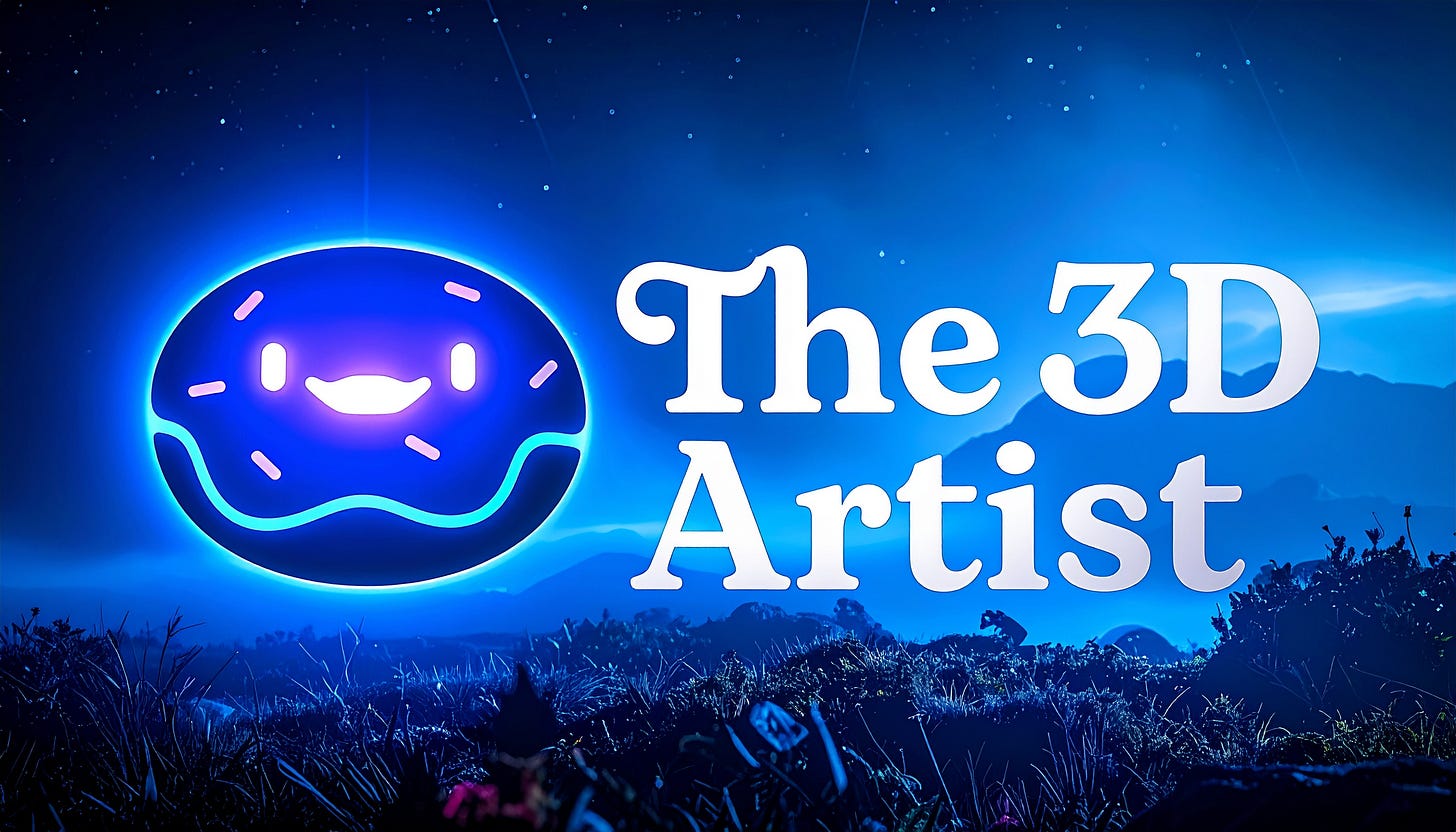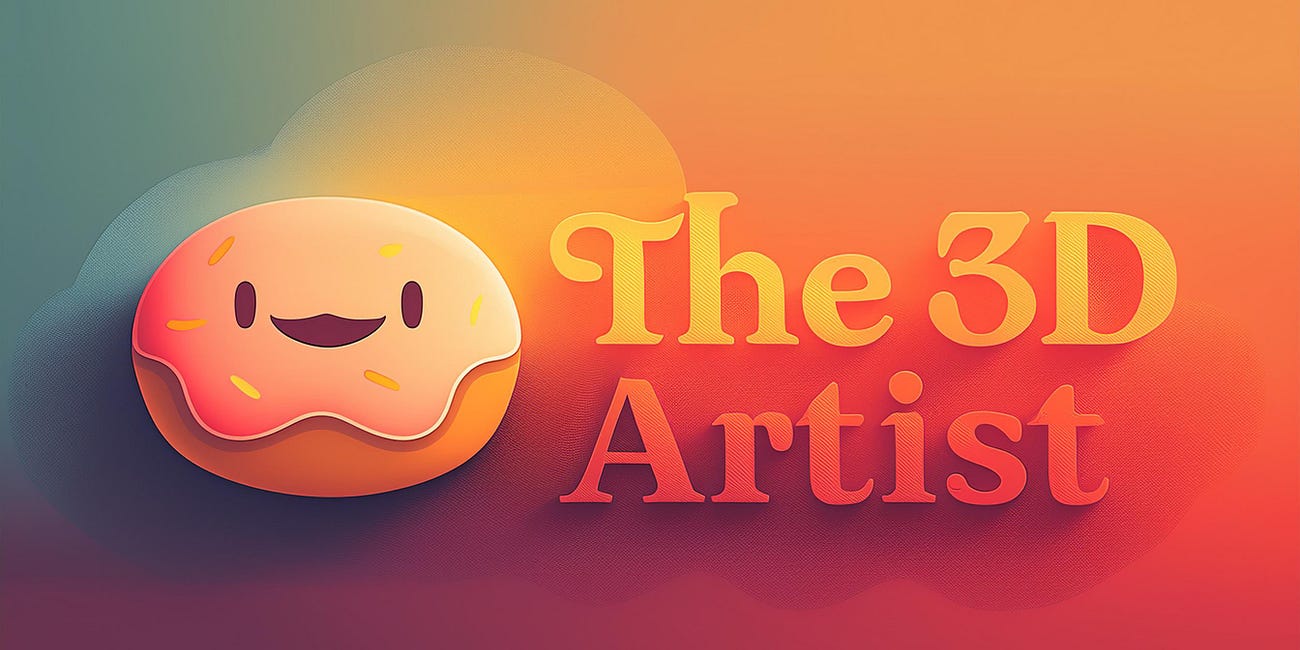Building a Guide for Moving Between 3D Industries
I’ve been to SIGGRAPH as a student, a job seeker, and an industry researcher. But in the last couple years, I’ve also taken on a new role: someone who evangelizes the idea of working in 3D outside of entertainment.
At this year’s SIGGRAPH, that meant:
Giving a formal talk.
Running a roundtable follow-up.
Sitting on a student-volunteer panel (which was a blast.)
Hosting a Birds of a Feather panel with industry leaders on careers outside entertainment.
Each session was a success in its own way. But by the last panel, I felt the air in the room shift…we weren’t just talking about possibilities anymore.
People wanted specific instructions to act upon.
Artists wanted more than inspiration. They wanted a step-by-step guide to moving between industries. And a one-hour conference talk isn’t sticky enough. You leave with good vibes and some new LinkedIn connections, but the real work of transitioning careers happens afterward, when the noise of the conference dies down.
So let’s build that guide together.
A Living Playbook for Transitioning Industries
I’ve consulted with and worked across nearly every 3D-adjacent industry at this point. I know the common patterns. But I’m also aware of my blind spots. There’s a difference between working with an industry and living inside that industry’s pipeline every day.
That’s where you, my brilliant readers, come in. I want to draft this guide with you. I’ll start with a framework or a set of steps every 3D artist should take when considering a transition. Then, each week, I’ll dive deeper into how those steps apply to specific industries (fashion, product design, automotive, etc.).
I’ll post drafts to a shared Notion page where you can leave comments, corrections, and additions. Together we can make this a living, breathing document that grows as the industries (and the tools) keep evolving.
The Six-Step Framework
Every industry is different. But the transition process follows the same general path.
Step 1 — Research the industry itself (not the 3D side).
How does this industry make money? (Spoiler: it’s not always how you think. Subway doesn’t make money on sandwiches; it makes money selling franchises.)
How do products get made in the traditional sense?
What are the major conferences, publications, and influencers?
Can you speak the “memes and in-jokes” of that space? If not, you’ll read as an outsider immediately.
Step 2 — Learn where 3D fits into their workflow.
Is 3D being used for internal reviews? Marketing assets? Supply chain optimization? Training?
Remember: in many industries, 3D is not the final output. It’s a tool for saving time, cutting prototypes, or reducing carbon footprint.
Step 3 — Understand the tools they use.
Every industry has its own stack: CLO, Browzwear, CAD, Unreal, Substance, Rhino, Catia…
Don’t be intimidated. If you know 3D fundamentals, you can adapt to new software.
Step 4 — Learn their challenges.
What’s broken in their current pipeline?
Where are they wasting money or time?
Those pain points are where your 3D skills create real value.
Step 5 — Know the job titles.
“3D Artist” might not be the name of the role you’re looking for. It might be “Technical Designer,” “Digital CMF Designer,” or “3D Product Developer.”
Learn the language so you can find the right openings.
Step 6 — Identify the unique value you bring.
You may not know their industry inside and out (yet), but you know something they don’t: advanced rendering, procedural workflows, real-time tools, simulation techniques, or just 3D production at scale.
That outsider perspective is powerful.
Why This Matters
At SIGGRAPH, a woman from a major fashion brand said she reviewed 200 portfolios from VFX and gaming applicants. Not one got hired. Why? None showed curiosity about the business itself. They treated fashion like another set of assets, instead of a world with its own rules, needs, and pain points.
That’s the trap to avoid. You can’t just bring 3D skills into a new industry. You need to bring intellectual curiosity. You need to speak their language, understand their memes, and care about their problems.
What’s Next
Over the next few weeks, I’ll be publishing guides that follow this six-step structure, tailored to different industries.
Think of these as first drafts.
They’ll live on Notion, open for your comments, so we can refine them together.
I don’t know what the final product looks like yet. Maybe a PDF handbook, maybe an ongoing wiki, still TBD.
But I know we need something. A resource that saves artists time, avoids unnecessary growing pains, and helps us all transition into new industries with confidence.
And I’m going to get things wrong. Maybe I’ll miss a key detail, or maybe I’ll frame something in a way that doesn’t line up with your lived experience. When that happens, don’t just roll your eyes and say “this guy sucks.”
Tell me why I suck.
Tell me how I’m sucking.
Tell me how I can suck less.
And I’ll put it in. Seriously. That’s the whole point. This only works if it’s built together.
Because if 3D is really becoming “just content,” as I argued last week, then the real skill of the future isn’t mastering one pipeline.
It’s learning how to move between them. And the only way we build that playbook is by being brutally honest with each other about what actually works.
The 3D Artist Community
3D Merch is here and we have a new hoodie!
3D News of the Week
Clay 4.Doh For Blender Released - 80.lv
Simulating Effervescent Liquid Color Spread In Houdini - 80.lv
Quad Maker is now updated to version 1.1.4 with Smooth by Selection. - Twitter
New Substance 3D Reviewer from Adobe and Meta reimagines design reviews - Adobe
UVPackmaster 3.4 for Blender adds one-click UV repacking - CG Channel
3D Tutorial
3D Job Spreadsheet
Link to Google Doc With A TON of Jobs in Animation (not operated by me)
Hello! Michael Tanzillo here. I am the Head of Technical Artists with the Substance 3D team at Adobe. Previously, I was a Senior Artist on animated films at Blue Sky Studios/Disney with credits including three Ice Age movies, two Rios, Peanuts, Ferdinand, Spies in Disguise, and Epic.
In addition to his work as an artist, I am the Co-Author of the book Lighting for Animation: The Visual Art of Storytelling and the Co-Founder of The Academy of Animated Art, an online school that has helped hundreds of artists around the world begin careers in Animation, Visual Effects, and Digital Imaging. I also created The 3D Artist Community on Skool and this newsletter.
www.michaeltanzillo.com
Free 3D Tutorials on the Michael Tanzillo YouTube Channel
Thanks for reading The 3D Artist! Subscribe for free to receive new posts and support my work. All views and opinions are my own!








